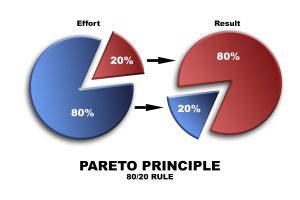Strategic Sourcing in a Volatile World: Building Supply Chain Resilience
Global supply chains continue to face challenges—from geopolitical tension and fluctuating raw material prices to logistics bottlenecks and shifting trade policies. In this environment, relying on traditional cost-driven procurement models is no longer enough. Companies must adopt strategic sourcing to ensure continuity, flexibility, and long-term competitiveness.
At its core, strategic sourcing isn’t just about finding suppliers at the best price. It’s about building a supply base that can adapt to disruption, maintain quality standards, and align with your business’s sustainability and compliance goals.
If you’ve read our previous articles on how strategic sourcing can help you withstand supply chain disruptions and how to ensure product quality when sourcing from low-cost countries, this post builds on those insights—focusing on the practical steps companies can take to strengthen their sourcing strategy today.
The Foundations of Strategic Sourcing
Supplier Diversification
Depending heavily on one supplier or one country exposes your operations to significant risk. Strategic sourcing emphasizes geographic and supplier diversification—building a flexible network across different regions such as India, Vietnam, Mexico, or Thailand. This approach reduces vulnerability to local disruptions and stabilizes lead times.
Comprehensive Supplier Evaluation
A resilient sourcing program starts with a thorough supplier vetting and risk assessment process. Beyond pricing and capabilities, companies should evaluate suppliers’ capacity management, financial stability, and crisis response readiness. Our post on vendor identification and management best practices provides deeper insight into how to do this effectively.
Flexible Contracting
Dynamic markets demand adaptable agreements. Contracts that allow for changes in pricing, logistics, and production schedules enable your supply chain to pivot quickly when disruptions occur. Flexibility must be built into both commercial terms and delivery expectations.
Nearshoring and Regional Resilience
For companies serving Europe or North America, nearshoring—moving production closer to end markets—has proven an effective way to shorten supply chains and reduce risk. Countries such as Mexico and Turkey are emerging as strong alternatives to distant production hubs.
Ongoing Supplier Performance Monitoring
Once suppliers are onboarded, the work doesn’t stop. Continuous monitoring of KPIs like defect rates, lead time adherence, and responsiveness helps identify potential issues before they escalate. A robust feedback and improvement system is key to sustaining long-term supplier performance.
Sustainability and Compliance Integration
As ESG (Environmental, Social, and Governance) standards become global requirements, procurement leaders must integrate sustainability audits into their sourcing processes. This protects your brand reputation while ensuring compliance with emerging international regulations.
Turning Strategy into Advantage
Companies that integrate these sourcing principles not only protect themselves from disruption but also gain a competitive advantage. They achieve more stable costs, build trust with customers, and enhance operational agility. In times of uncertainty, preparedness becomes the ultimate differentiator.
Why EDS International Is Your Ideal Strategic Sourcing Partner
At EDS International, we specialize in helping businesses worldwide design and implement sourcing strategies that balance cost efficiency with resilience. Our teams in India, Vietnam, Mexico, and across Asia and Latin America work closely with clients to identify reliable suppliers, conduct risk assessments, and ensure product quality from start to finish.
If you want to move from reactive procurement to a truly strategic sourcing model, EDS International is your best partner.
👉 Contact us to build a sourcing strategy that keeps your business moving—no matter the global conditions.








